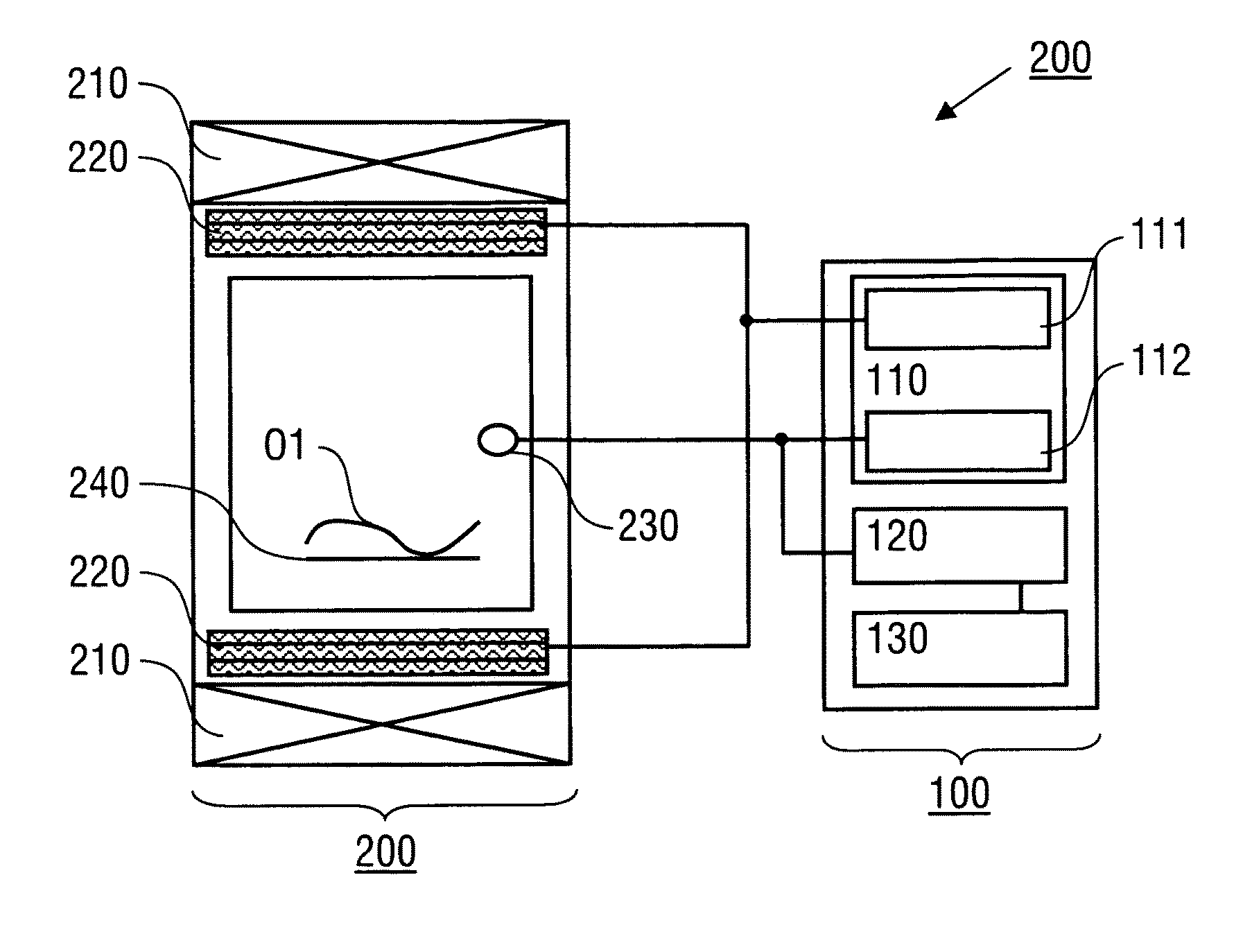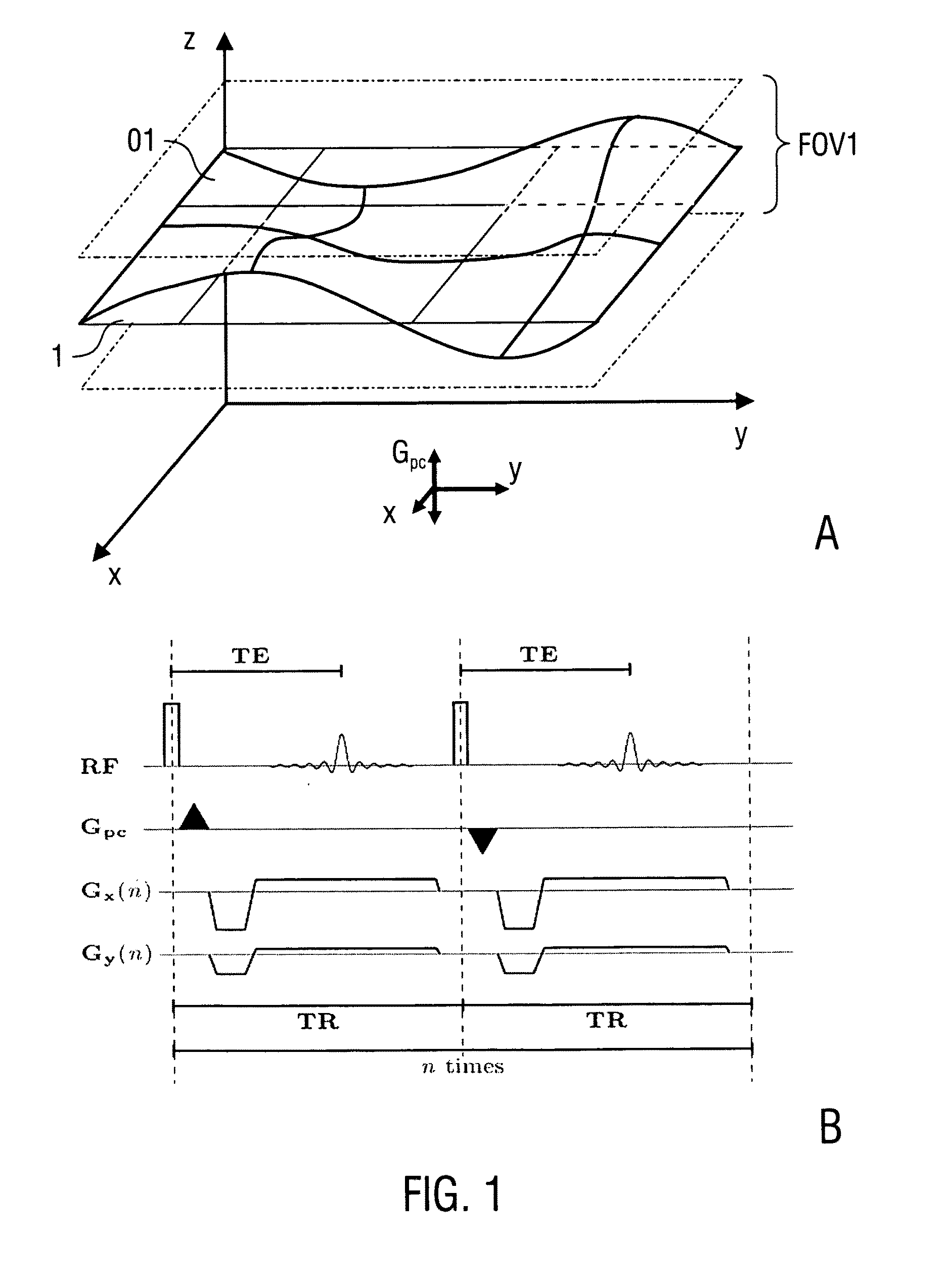Spatially encoded phase-contrast MRI
a phase-contrast, spatial encode technology, applied in the direction of magnetic measurement, measurement using nmr, instruments, etc., can solve the problems of inhomogeneity of field, affecting the detection accuracy of mri data, and reducing acquisition time, so as to avoid the disadvantages of conventional techniques, reduce acquisition time, and reduce the effect of acquisition tim
- Summary
- Abstract
- Description
- Claims
- Application Information
AI Technical Summary
Benefits of technology
Problems solved by technology
Method used
Image
Examples
first embodiment
3D MRI of 2D Structures (First Embodiment of MR Data Collection)
[0045]According to the first embodiment of the invention, an object layer O1 is imaged as described in the following with reference to FIGS. 1A and 1B. The object layer O1 has a spin density distributed along a curved surface, which essentially extends parallel to the x-y-plane. Minimum extensions of the object layer O1 occur in the z-direction. Accordingly, the z-direction is selected as the predetermined spatial dimension for applying the phase-contrast gradients Gpc, and a plane parallel to the x-y-plane is selected as a projection plane 1. For MRI of the object layer O1, two 2D MR images representing projections of the object layer O1 onto the projection plane 1 in object space are collected with different settings of the spatially encoding phase-contrast gradients along the z-direction. The phase difference between MR signals acquired with the two different phase-contrast gradients represents the mean spin density ...
PUM
 Login to View More
Login to View More Abstract
Description
Claims
Application Information
 Login to View More
Login to View More - R&D
- Intellectual Property
- Life Sciences
- Materials
- Tech Scout
- Unparalleled Data Quality
- Higher Quality Content
- 60% Fewer Hallucinations
Browse by: Latest US Patents, China's latest patents, Technical Efficacy Thesaurus, Application Domain, Technology Topic, Popular Technical Reports.
© 2025 PatSnap. All rights reserved.Legal|Privacy policy|Modern Slavery Act Transparency Statement|Sitemap|About US| Contact US: help@patsnap.com



